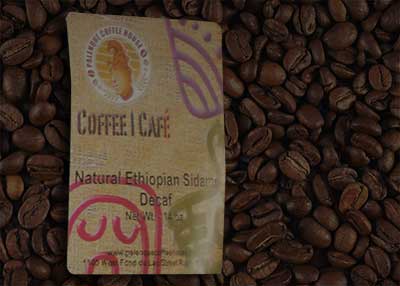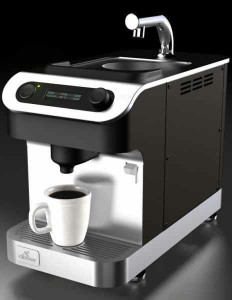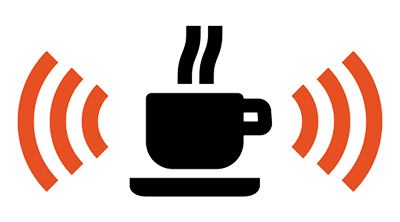Posted on Jan 19, 2012

From this point, the spread of coffee is difficult to track along a linear storyline – that’s how quickly coffee’s popularity started taking off. Coffee found an entry point into Europe by way of Italy, which would open its first official coffee house the mid-17th century, and moved as far east as Indonesia. Coffee was also brought to the Americas as the exploration of the New World continued. The first historical European mention of coffee comes from the aforementioned German Leonhard Rauwolf in 1573. A Sidenote in History: Coffee and Pope Clement VIII Coffee’s spread in Europe was largely due to it being accepted as a Christian beverage by Pope Clement VIII – an issue for many Europeans that had prevented the beverage spreading even more quickly. In fact, Pope Clement VIII had been beseeched by counselors to decry the coffee as a “bitter invention of Satan.” Pope Clement VIII’s response was apparently that “This devil’s drink is so delicious…we should cheat the devil by baptizing it.” (Again, as with many historical coffee anecdotes, it’s important to take this with a grain of salt). Either way, coffee did receive legitimization in the Christian world (a legitimization that eluded the Ethiopian Orthodox Church for sometime) which means Europe was soon flooded with the drink. A major port between North Africa and the Middle East, Venice, was a crucial entry point for coffee, which helps explain why Italy’s first coffee house would be opened there in the middle of the 17th century. Not long after Pope Clement VIII’s declaration, a Dutch merchant named Pieter van der Broecke brought coffee shrubs from Mocha and planted them in the Amsterdam Botanical gardens, where the coffee actually flourished. By the time Leonhard Rauwolf was writing about coffee in Europe in the 16th century, it had already made its way up to England through the British East India Company and the Dutch East India Company. Coffeehouses exploded in England during the 17th century, as many cafes such as “The Grand Café” in Oxford (which still stands today, though it now focuses on wine) were created off of supplies from coffee...
Read More »
Posted on Jan 16, 2012

Perhaps the first thing single-origin coffee novices need to learn about African-grown coffee is the difference between Coffea arabica and Coffea canephora, the two species of coffee-growing plants or shrubs that essentially divide the entire coffee world into two. (Site note: “Robusta” is technically one variety of Coffea canephora, with the other variety being Nganda, which is why it is not scientificially classified as “Coffea Robusta”). Most people worldwide prefer Arabica coffee – about 80% of the world’s coffee comes from this plant rather than Coffea canephora. Though much of the world’s Robusta coffee is now produced in Vietnam, Robusta is also produced in areas like Africa and Brazil. Africa, specifically, devotes a lot of its coffee production to Robusta coffee, with countries like Nigeria, Gabon, Angola, and Madagascar focusing mainly on Robusta production. (A majority of the other countries, like Brazil, will produce both types of coffee, though a few do focus more heavily on simply cultivating Arabica). It’s not hard to tell why this might make a difference for pursuers of single origin African coffee: if you like Robusta over Arabica coffee, then you’re more likely to pursue a single origin coffee that originated from a single origin in Africa. A Quick Note: Understanding Robusta Coffee Since Africa is so heavily-focused on Robusta coffee (at least relative to other conteinents), it’s worth making a special note on how Robusta coffee is grown. Typically, Robusta coffee is produced at lower altitudes, for one, and because of its higher caffeine content, is generally more resistant to disease. Despite these factors, the flavor of Arabica is generally considered superior to that of Robusta – even if individual opinions may vary. Although both types of coffee beans have their “good” and “bad” varieties – as all foods and produce products are bound to have – generally most coffee lovers tend to lean toward using Arabica beans. With some 20% of the coffee market, however, it is apparent that Robusta has a place. Issues like cost, individual tastes, and how companies produce large amount of multi-origin coffees (in our eyes, this is a no-no) keep demand for Robusta relatively – and pardon the pun – robust. Much of the vacuum-packed coffee you find in supermarkets is actually Robusta thanks to the high yield of Robusta in top-exporting countries like Vietnam and Brazil; Robusta is cheaper to acquire. Specialty coffees typically are from Arabica beans, however it’s important to remember that some roasters “dilute” the impact of Arabica beans with Robusta...
Read More »
Posted on Jan 12, 2012

The origin of the world’s first single-origin coffee (and, really, the first coffee anywhere) comes from northeast Ethiopia, where legend states that a goat-herder named Kaldi noticed one of his goats chewing on a coffee bean and experiencing its now-famed energizing effects. Though this story supposedly occurred in the 9th century, there is no real evidence that northeastern Ethiopia was even aware of coffee earlier than about the 17th century. The truth is that the further we rewind the clocks on coffee, the more hazy the story of its discovery becomes. Another account traces coffee’s beginnings to Sheik Omar, an exile who had to turn to eating the berries of a nearby plant and eventually discovered that by boiling them, the brown liquid that resulted made him feel energized. The best evidence suggests that coffee was first brewed in the Arabian peninsula in the Mokha region of Yemen (yes, this region is responsible for the Mocha bean – but more about that later). There are definitive historical accounts that speak about the coffee brewed in this region beginning in the 1400s, with the popularity of coffee spreading throughout the Middle East within some two hundred years. According to another legend, the famous Italian explorer, Marco Polo, encountered some Mocha beans in his exploration – even though he didn’t travel to Yemen. Instead, the story goes that Marco Polo was staying in Tyre (modern-day Lebanon) when he came across a merchant who was in possession of some of the Mocha beans. In the story, Polo brought these beans back with him to Europe, though it is now known that coffee did not become prominent in Europe for at least another century or...
Read More »
Posted on Jan 9, 2012

Although it’s tempting to name Kaldi, the supposed Ethiopian goat-herder who first noticed that the same goat who had been chewing on some coffee beans experienced a surge of energy, as the “Thomas Edison” of coffee, the history – like the drink – is a little murkier than that. The story for the origins of coffee brewing – as opposed to the discovery of the beans/berries themselves – belongs to Sheik Omar. Other events, which you’re about to learn about in the next sections, are also possibly legend – Marco Polo encountering Mocha beans in Tyre, for example. It’s difficult to verify most of these accounts, which means that the history of coffee is best described in places, not people. It’s well -established the coffee as a popular beverage began in the Arabian peninsula, where coffee was indeed roasted and brewed much like it is today. So it’s up to you whether or not you accept some of the more “legendary” tales of the origins of coffee – though our knowledge of coffee’s primordial geography does seem to verify the Ethiopia-Yemen link as the cradle of coffee...
Read More »
Posted on Jan 5, 2012

Kaldi was an Ethiopian goat-herder who first noticed that a goat chewing a particular plant’s berries made him behave differently: namely, his goat became more energized. Kaldi was noticing the effects of caffeine on the goat’s body – it’s this energizing effect that has risen to make coffee perhaps the most popular “pick me up” beverage in the world. So what is caffeine, and why does it energize the body? In scientific terms, it is a crystalline xanthine alkaloid that energizes the body in two ways: first, it acts as a mild stimulant. Second, it inhibits the acetylcholinesterase enzyme from breaking down acetylcholine, a neurotransmitter. The end result is that a person consuming caffeine feels energized, ready to focus, and better wakefulness – ideal in a morning drink. Many people believe that espresso, a strong coffee drink made through the pressurized drip method (more on that in the section on coffee brewing) is actually “stronger” than its equivalent in coffee because it has a higher caffeine content than regular coffee. This is actually a myth, because espresso beans are typically coffee beans; the difference between espresso and traditional coffee is the brewing method, as a variety of beans can be used for either method. In fact, the brewing method in drip-brewed coffee, for example, often gives water more time to extract caffeine from coffee beans, giving it a strong caffeine content than many...
Read More »






